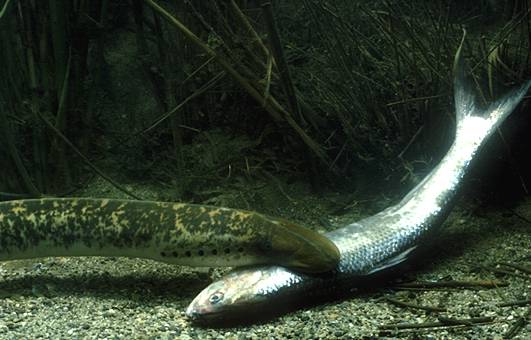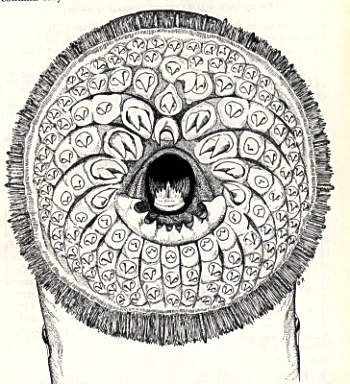 |
| Feeding of the Sea Lamprey |
 |
 |
| The sea lamprey is a parasite that feeds on the blood, body fluids, and products of tissue cytolysis of fish. Over its lifetime, a lamprey will consume a average of 18.5 pounds of fish. The lamprey consumes over three pounds of fish even before it metamorphizes into a sexually mature adult in the free-swimming stage. Generally, the eyes of a lamprey are used to detect its prey. However, in especially deep waters, the lamprey relies more heavily on its lateral line to sense the vibrations of its prey. |
| The mouth of the sea lamprey contains teeth arranged in concentric circles around a hole whic contains the rough grasping tongue. When the lamprey attacks, its head tilts up so that its oral disk is exposed. It fastens onto its prey with its oral disk, often shifting along the side of the prey to find a susceptible spot to suck. Then its tongue is released creating a suction onto the fish, thus allowing the teeth to pierce the fish. An anticoagulant in the saliva of the lamprey allows the wound to stay open for hours or weeks. The time spent sucking on the fish depends on the size of the lamprey. An average-sized lamprey will feed for an average of 76 hours at a time. At times during its juvenile growth spurt, a lamprey can remain attached to its host for up to 220 hours. |
 |
| Courtesy What is a Sea Lamprey? |